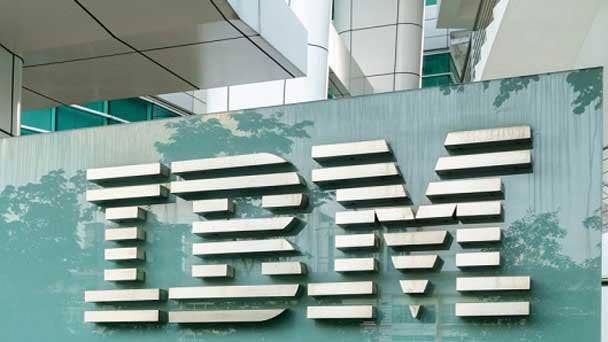IBM’s Dinesh Nirmal On Turbonomic Deal, AI’s Obstacles, And How Partners Are ‘Huge’ In Big Blue’s Business Automation Strategy
‘I would say our channel partners have been an amazing help from a skills perspective, from an education perspective, from being able to tell our story,’ Dinesh Nirmal, general manager of IBM’s automation business, tells CRN in an interview.

IBM’s latest announced acquisition, of Boston-based application resource management (ARM) and network performance management (NPM) software provider Turbonomic, is another in a line of purchases to build a full-stack offering to help customers find and automate business processes to save money and achieve efficiency.
But along with this acquisition strategy, IBM has received and will need the help of channel partners, who have been a “huge help” in educating customers on the benefits of automation and tuning customers’ models, Dinesh Nirmal, general manager of IBM’s automation business, told CRN in an interview.
“I would say our channel partners have been an amazing help from a skills perspective, from an education perspective, from being able to tell our story,” Nirmal said. “They are the ones who can really go sit there and talk about RPA (robotic process automation), create a touchpoint, tell the differentiation that IBM brings.”
IBM channel partners have been helpful in two areas ripe for automation: using artificial intelligence (AI) to automate business processes within one segment or line-of-business in an enterprise and doing the same for larger-scale IT operations -- the more difficult of the two because of the needs around creating a model and training it with the customer’s data.
“That’s where the partners come in,” Nirmal said. “They can help us with tuning their models and a constant feedback loop into it. I would say across both pillars partners have been amazingly collaborative, cooperative and a help to our customers.”
John Longmire, chief revenue officer at Boston-based IBM partner Ironside, previously told CRN that bundled and integrated automation technologies like IBM Cloud Pak for Data plus the overall decrease in automation entry costs have made business automation tools “very accessible to medium and even smaller businesses.”
“Today, we see companies of all sizes being very successful with AI, even if they’re only building a handful of models,” Longmire said.
Here are five more questions Nirmal answered on what the Turbonomic acquisition means for channel partners.

Why did IBM make this acquisition?
When we look at our software strategy, we have four pillars all built on Red Hat OpenShift. One is obviously the data and AI piece. Then we have automation, security, and AI ops.
When I look at automation, every enterprise has their line of business and IT. And automating the line of business and IT becomes very critical. And automation really enables it because you want to bring both of those together. And that’s why we’re building an automation platform, rather than just giving them RPA (robotic process automation) or process mining or app integration, we really want to bring every aspect of automation under one umbrella on a single platform built on Red Hat OpenShift.
We did the WDG acquisition for RPA last year. We did MyInvenio for process mining. So we have workflow, we have RPA, we have process mining, we have document processing, and we have decisions. And that really puts us in a place where a line of business has one place to go for all capabilities.
Now, there’s the observability piece, and we decided to go with Instrada because its cloud-native, microservice architecture runs on cloud and hybrid cloud. Perfect fit for us. And our goal is to bring observability across lines of business and IT.
Now, the next step for us is how do we make observability actionable? Using intelligence, or AI, so that’s where AIOps comes in. You have observability, now we can make it actionable using Turbonomic, and we will add AI using AIOps on top of it. That’s the high-level plan -- line-of-business and IT personas together under one umbrella on an automation platform built on Red Hat OpenShift.

What do partners need to know?
Now for partners, this is an amazing story. If you’re a partner who is trying to bring your customers applications on a hybrid cloud, now all of a sudden you can bring the AI story with observability and actionability, using Turbonomic, which really helps save cost because now when resources idle, you can shut it down.
And you can add more memory, more CPU. Or if an application is misbehaving, not only are you observing it, now you’re taking action to fix it. And then you’re adding AI to proactively make recommendations on it. From a partner perspective, all of a sudden, I can not only add value with my own solution, but this brings much more value from a cost perspective, from an AI perspective and from an observability perspective.
Customers asking for it. The industry is driving it. And then these companies are showing the value of what it can do. To give you an example, recently one of our customers who had a process that used to take three minutes using RPA and our technology was able to run it below 30 seconds. That’s the kind of savings our customers are seeing.

How far along are we in business automation penetrating enterprises of all sizes?
When I look at automation at typical enterprises, there’s two categories. There are attended tasks and there are unattended tasks. An attended task has been automated to a large extent that’s the batch jobs, that’s processing. Somebody’s sitting in front of a computer, entering and you’re recording it. That’s only a small piece of the automation. When people talk about automation, they immediately jump to RPA.RPA is in its infancy for the most part because as you download hundreds of bots, thousands of bots, or hundreds of thousands of bots, how do you manage it? How do you securely manage it? How do you schedule it? How do you add high availability? So the next phase in automation is how do you make it enterprise ready.
The second piece is, you cannot have automation by going to one vendor to get RPA, one vendor to get process mining, one vendor to get decisions. Because then, you’re not really automating. You’re adding complexity. That’s why we embarked on a journey to build an app platform. We have to make sure we own it and build it and be tightly integrated into our solution. Automation is all about bringing simplicity in.
It helps from an optimization perspective. It helps from a productivity perspective. If there’s one thing that an enterprise gains is that they immediately take complexity out and bring simplicity in.
We’re in the early phase. If you’re an RPA vendor, you’re trying to get process mining. If you’re a process mining vendor, you’re trying to get app integration capabilities. The winning player will be somebody who has all those capabilities stitched together and be able to go talk to an enterprise and say, ‘We’ve got it.’

What use cases do you see for business automation in the future?
Large enterprises are already on a path for automation. The attendant tasks, a lot of enterprises have already automated.
But RPA can be used for IT. Every IT shop has hundreds and thousands of processes. Don’t you have to automate that? Process mining is looked at as a line of business, but don’t you want to use process mining to mine the process you’re using?
There are a lot of use cases. How do you lower costs and improve IT productivity? That’s one use case. Digitization and build and automate around RPA is another one. Modernization of your applications is another one.
The whole API economy, every developer spends a tremendous amount of time creating test cases for their APIs. How about we automate test case generation? There’s a tremendous amount of opportunities within an enterprise. It’s not just in a line of business or IT across the enterprise that we can automate. But right now it’s mainly focused on attended tasks.
It’s not just enterprises, but even SMBs (small- to medium-sized businesses) have to adapt to it. Automation will become a norm for every company to adopt, whether you are a small company or a medium-sized company or you’re a large enterprise. It’s going to be part of everyday life to say, ‘If this process exists, how do we make sure that it’s at least a candidate for automation?’

What obstacles lie ahead? Do you see business automation becoming more competitive?
An obstacle that I see is adoption. Anytime you have to take something and work on it, you have to give up on something else. While it’s high on the priority list, some of these things take time. How do I make sure that I really bring AI into it? It sounds great. It will help you with reducing your cost. It will help you with remediation of problems a lot faster. But at the same time, you have to take the time to bring in the AI models, train them, run it, and make sure. So there are some upfront costs.
The strategy is building an automation platform. That’s where I think customers will go and that’s a need in the market. I know a strategy’s working when competition is trying to copy it. I see more and more platform discussions coming about. How do we bring not just RPA, not just process mining, but all the capabilities together to an enterprise.
Competition is good. It keeps us on our toes. It makes us more innovative and want to get ahead. But there is going to be a tremendous amount of competition with new players coming in.
The next stage, that’s going to be an obstacle. Building a bot is not that hard. But that bot being able to do what we want at scale at an enterprise with good security and governance and high availability -- that next phase is where the obstacles will come in. Being able to deploy that bot in a production along with hundreds of thousands of other bots and its resources in the right way. Maybe I wouldn’t call it an obstacle, but it’s definitely something only an enterprise vendor like IBM and few others can do.